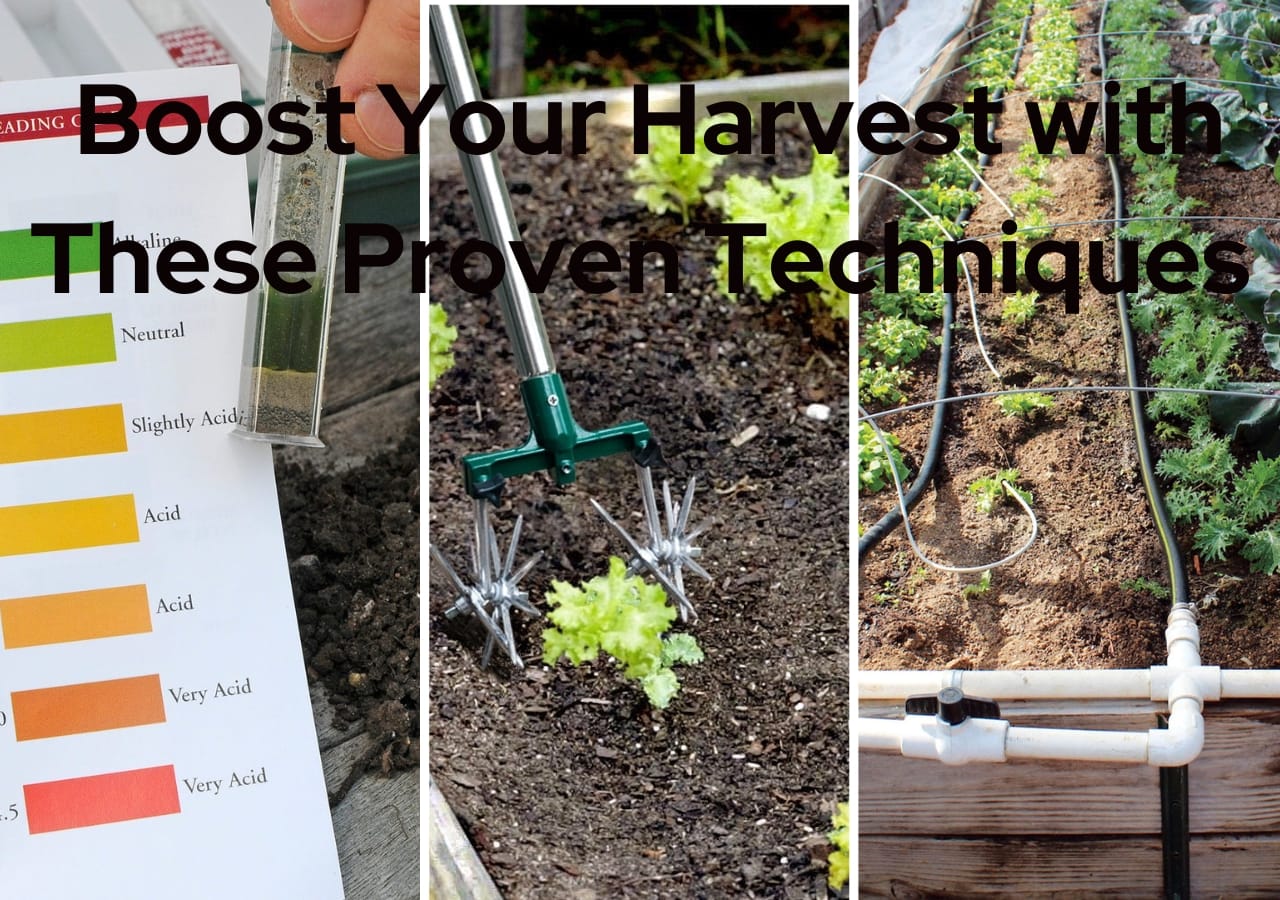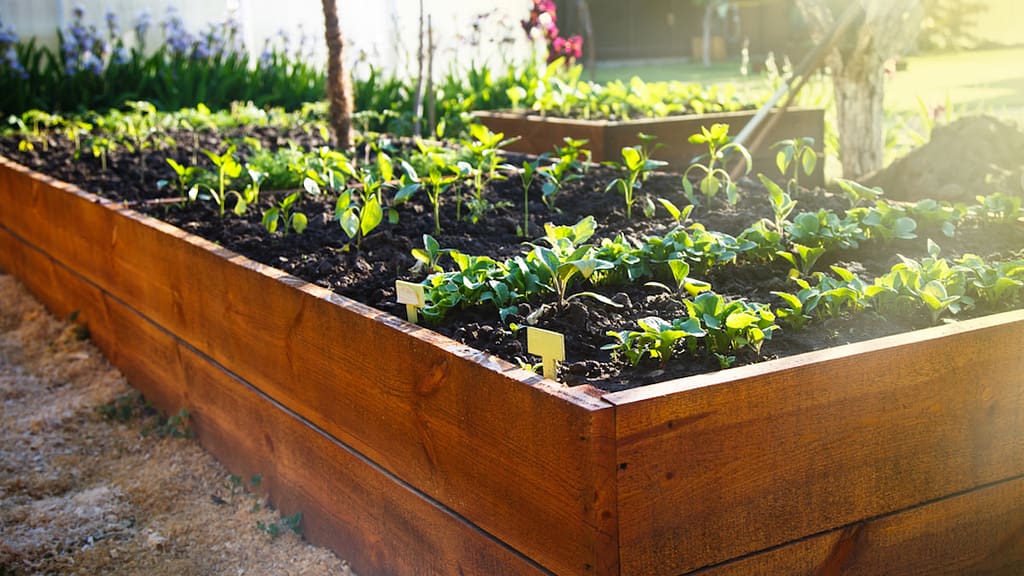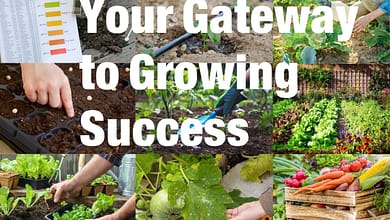Vegetable Gardening Hacks: Boost Your Harvest with These Proven Techniques

Vegetable gardening is more than just a rewarding hobby; it offers many benefits for both individuals and the environment. By cultivating your vegetables, you gain direct access to fresh, nutritious produce free from harmful chemicals and pesticides commonly found in store-bought options.
This practice promotes a healthier lifestyle and significantly reduces your carbon footprint, as you minimize the resources and energy required for transporting food from farms to markets.
In addition, growing your food allows you to take control of your diet and know exactly what goes into your meals.
Furthermore, the act of vegetable gardening can bring about a profound sense of peace and satisfaction. Tending to plants and watching them grow connects you to nature in a way that can be incredibly grounding and therapeutic.
This connection encourages mindfulness and can be a great stress reliever, providing a calming escape from the hustle and bustle of daily life.
Maximizing your harvest is essential for making the most out of your vegetable gardening efforts.
By implementing proven techniques such as crop rotation, companion planting, and proper soil management, you can significantly increase both the quantity and quality of your yield. This ensures that you can savor your produce throughout the seasons, enjoying the fruits of your vegetable gardening labor in various dishes.
Additionally, this approach fosters a sense of community, as it not only enhances the sustainability of your garden but also encourages you to share the abundance of your harvest with family, friends, and neighbors.
Whether through sharing fresh vegetables at a gathering, participating in a local farmers’ market, or donating excess produce to those in need, your gardening efforts can have a positive ripple effect on your community.
Ultimately, vegetable gardening is a fulfilling endeavor that nourishes both body and soul while contributing positively to the planet.
Table of Contents
1. Planning Your Vegetable Gardening
Choosing the Right Location

Selecting the ideal spot for your vegetable gardening is crucial for success. Look for an area that receives at least six to eight hours of sunlight each day, as most vegetables thrive in bright light.
Ensure the location has good drainage to prevent waterlogging and watch out for spots that collect water after heavy rain. Proximity to a water source will also simplify your vegetable gardening routine.
Opting for the Best Crops Based on Climate and Soil



Before planting, understand your local climate and soil conditions. Some vegetables are better suited to warmer temperatures, while others thrive in cooler weather.
Conduct a soil test to assess pH and nutrient levels, which can inform your vegetable gardening choices.
For sandy soils, opt for root vegetables like carrots and radishes, while heavier clay soils may be more suited for crops like beans and squash that can thrive without being too bogged down.
Companion Planting for Better Yields

Companion planting involves growing two or more plant species close together for mutual benefit in your vegetable gardening. Certain combinations can deter pests, enhance growth, and improve flavor.
For example, planting basil near tomatoes can improve the tomatoes’ taste while repelling pests. Research compatible plants to create a harmonious vegetable gardening environment that maximizes yield and minimizes challenges.
This strategy promotes biodiversity and can lead to a more sustainable vegetable gardening experience.
2. Soil Preparation
Testing Soil for Nutrient Content

To achieve healthy plants and optimal yields, it’s essential to begin your vegetable gardening with a thorough understanding of your soil. Testing soil for nutrient content involves collecting samples from various spots in your vegetable gardening space.
You can purchase a soil test kit or send samples to a local extension service. The results will provide valuable information on pH levels and the availability of essential nutrients like nitrogen, phosphorus, and potassium.
Armed with this knowledge, you can make informed decisions about amendments and fertilization for your vegetable gardening.
Adding Organic Matter and Amendments


Improving soil quality is crucial for fostering strong plant growth in vegetable gardening. Adding organic matter, such as compost, well-rotted manure, or leaf mold, helps to enhance soil structure, water retention, and nutrient availability.
Incorporate these materials into the soil before planting to create a rich environment for your vegetables. Additionally, consider adding amendments based on your soil test results; for instance, lime can raise pH levels, while sulfur can lower them.
This tailored approach ensures your soil meets the specific needs of your vegetable gardening plants.
Techniques for Effective Tilling


Proper tilling techniques are essential for preparing your vegetable gardening bed. Tilling helps to aerate the soil, mix in organic matter, and break up compacted soil layers.
It’s best to till when the soil is moist but not overly wet to prevent clumping. Use a garden fork or a rototiller to turn the soil to a depth of about 12 inches, ensuring an even distribution of amendments.
Take care not to over-till, as this can lead to soil erosion and loss of beneficial microbes. Following these practices will set the stage for a productive vegetable gardening season.
3. Watering Wisely
Best Practices for Watering Vegetables


Proper watering is key to growing healthy vegetables in your vegetable gardening. Aim to water deeply and infrequently rather than shallowly and often. This encourages root systems to grow deeper, making plants more resilient.
Early morning is the best time to water, as it allows plants to absorb moisture before the heat of the day, reducing evaporation. Check the soil moisture regularly; if the top inch feels dry, it’s time to water. Consider mulching around your vegetable gardening plants to retain moisture and suppress weeds.
The Benefits of Drip Irrigation


Drip irrigation is an efficient method that delivers water directly to the base of plants, minimizing water waste in your vegetable gardening. This targeted approach reduces evaporation and runoff while ensuring that deep-rooted plants receive the moisture they need. Additionally, drip irrigation helps prevent fungal diseases by keeping foliage drier.
With a relatively low installation cost and minimal maintenance, this system can significantly improve your vegetable gardening’s water management, making it an excellent choice for any vegetable gardener.
Using Rain Barrels to Conserve Water


Collecting rainwater using rain barrels is a smart way to conserve water and reduce your gardening costs. Position barrels under downspouts to capture runoff from your roof.
Rainwater is free of chemicals found in municipal water supplies, making it ideal for your plants. Using this sustainable source of water not only benefits your garden but also lessens your dependence on local water systems, especially during dry spells.
Ensure your barrels have secure lids to keep out debris and mosquitoes and use a spout for easy access.
4. Pest Management
Natural Pest Control Methods

Managing pests in your garden can be done effectively with natural methods that support a healthy ecosystem.
One of the simplest strategies is to encourage natural predators such as ladybugs, lacewings, and birds. These creatures feed on common garden pests like aphids and caterpillars.
Creating a biodiverse environment with a variety of plants can attract these beneficial insects and help maintain the balance in your garden.
The Role of Beneficial Insects



Beneficial insects play a vital role in pest management. Not only do they help to control harmful pest populations, but they also contribute to pollination, which is essential for the success of many vegetables. Planting flowers such as marigolds, dill, and yarrows can attract these helpful insects, providing them with habitat and nourishment.
By fostering a garden that welcomes these allies, you can naturally reduce the need for chemical pesticides while boosting overall plant health.
Homemade Organic Sprays for Pest Deterrence

If pests become a problem, homemade organic sprays can serve as a deterrent without harming beneficial insects or the environment.
A simple solution can be made by mixing water with soap and a few drops of vegetable oil. This mixture targets soft-bodied insects like aphids and spider mites, suffocating them on contact. Garlic and pepper sprays are also effective, as their strong scents can repel many pests.
Applying these sprays in the early morning or late evening will help protect beneficial insects while keeping your vegetable garden thriving.
5. Maximizing Growing Space
Vertical Gardening Techniques


Vertical gardening is a creative way to maximize your growing space, especially in smaller gardens. By using trellises, wall planters, or hanging pots, you can grow climbing plants like beans, cucumbers, and tomatoes.
This not only saves ground space but also improves air circulation and sunlight exposure for your plants. Additionally, vertical gardening can add visual interest to your garden, making it both functional and aesthetically pleasing.
Using Raised Beds for Better Drainage and Soil Control
Raised beds are an effective gardening method that enhances drainage and allows for better soil management.
By creating a contained area filled with a rich soil mix, you can ensure that your plants have optimal growing conditions. This method also protects plants from soil compaction and reduces weed growth.
Raised beds can be easily customized in size and shape, making them adaptable to various spaces. Consider positioning them in a sunny location to take full advantage of sunlight throughout the day.
Intercropping for Increased Productivity
Intercropping involves growing two or more different plants close together for mutual benefit.
This technique can lead to increased productivity as complementary plants can enhance each other’s growth. For example, planting carrots and onions together can deter pests, while beans can fix nitrogen in the soil, benefiting nearby crops.
By strategically planning your planting combinations, you can make the most of your garden space and improve overall yields. This method not only optimizes land use but also promotes biodiversity in your garden.
6. Harvesting Techniques
When to Harvest for Peak Freshness
Timing is crucial when it comes to harvesting vegetables for optimal freshness and taste. Each crop has its ideal harvesting window, which is often indicated by color, size, or firmness.
For instance, most leafy greens should be picked before they become overly mature, while root vegetables like carrots and beets are best harvested when they reach their desired size.
Regularly checking your plants will help you determine the right time to harvest, ensuring you enjoy vegetables at their peak flavor.
Tools and Methods to Ensure a Successful Harvest


Using the right tools can make harvesting easier and more efficient.
A sharp knife or garden shears is essential for cutting fruits and vegetables cleanly without damaging the plant. Harvest baskets or containers help keep your produce safe and organized as you collect it. Gentle handling is key; avoid bruising or crushing the vegetables to maintain their quality.
When harvesting, aim to work in the early morning or late afternoon to avoid heat stress on your plants and preserve the freshness of your produce.
Tips for Preserving and Storing Your Harvest
Proper storage is vital for extending the life of your harvested vegetables. Most should be kept in a cool, dark place, while others may benefit from refrigeration.
For example, leafy greens and herbs thrive when stored in the fridge and wrapped in a damp paper towel to maintain moisture. Consider blanching and freezing excess produce to enjoy throughout the year.
Additionally, drying or pickling can be great methods for preserving certain vegetables.
Taking these steps can help you make the most of your harvest, ensuring fresh flavors long after you’ve gathered your crops.
7. Seasonal Care
Preparing Your Garden for Winter
As the growing season comes to an end, it’s essential to prepare your vegetable gardening space for winter to protect your plants and enhance soil health.
Begin by cleaning up any dead plant material, as this can harbor pests and diseases.
Consider adding mulch to your vegetable gardening beds; it acts as insulation against cold weather and helps retain soil moisture.
If you have perennial plants, trim them back as needed, and consider adding a layer of compost to replenish nutrients in the soil.
Preparing your vegetable gardening properly helps ensure a healthy start come spring.
Rotating Crops Annually to Maintain Soil Health
Crop rotation involves changing the types of plants grown in a specific area of your garden each year. This practice helps maintain soil health by preventing the depletion of essential nutrients and reducing the risk of pest infestations and diseases.
Different crops have varying nutrient requirements and pest associations, so by rotating them, you can improve soil fertility and encourage beneficial organisms.
Plan your garden layout ahead of time to ensure effective rotation, allowing for a balanced and thriving garden ecosystem.
Cover Crops for Improving Soil Quality
Cover crops play a vital role in enhancing soil quality during the off-season.
Planting species such as clover, vetch, or rye can add organic matter to your soil, improve aeration, and prevent erosion. These crops also help fix nitrogen levels in the soil, leading to healthier conditions for future plantings.
When spring arrives, simply till the cover crops into the soil, enriching it with nutrients while providing a protective layer during the winter months. Incorporating cover crops into your gardening routine can foster long-term productivity and sustainability.
8. Troubleshooting Common Issues
Identifying and Solving Common Plant Diseases
Understanding plant diseases is crucial for maintaining a healthy garden. Look for signs such as discoloration, wilting, or spots on leaves, which may indicate a problem. Common diseases include mildew, blight, and root rot.
To address these issues, ensure proper ventilation around plants, avoid overhead watering, and remove infected plant parts promptly.
Implementing crop rotation and using disease-resistant plant varieties can also help reduce the likelihood of future outbreaks.
Managing Weeds Effectively
Weeds are competitors for resources and can hinder plant growth. To manage them effectively, consider mulching around plants to prevent weed growth, as mulch blocks sunlight.
Regular hand-pulling or using a hoe can also be effective, especially when weeds are small. It’s best to tackle weeds after a rain, when the soil is softer, making them easier to remove.
Additionally, maintaining healthy soil with proper nutrients will foster strong plants that can outcompete weeds.
Adjusting to Weather Changes Throughout the Growing Season
Weather can be unpredictable and can significantly impact your garden. Be prepared for sudden changes by monitoring local forecasts and having a plan in place.
For instance, during unexpected heat waves, provide shade for delicate plants and ensure proper watering. Conversely, during cold snaps, cover vulnerable plants with cloth or bring potted plants indoors.
Adapting your gardening practices to accommodate weather fluctuations will promote plant resilience and overall success in your garden.
9. Sustainable Practices
Incorporating Permaculture Principles
Permaculture is a design philosophy that mimics natural ecosystems to create sustainable and self-sufficient vegetable gardening spaces.
By observing the relationships between plants, animals, and their environment, you can design a vegetable gardening system that uses resources efficiently.
Integrating elements such as guild planting, where compatible plants are grouped, can enhance biodiversity and improve resilience against pests.
Additionally, creating zones in your vegetable gardening space based on frequency of use helps optimize space and energy, leading to a more productive and harmonious environment for your vegetable gardening.
Composting for Nutrient-Rich Soil
Composting is an excellent way to recycle organic waste while enriching your garden’s soil. By collecting kitchen scraps, yard debris, and other organic materials, you can create a nutrient-dense compost that improves soil structure and fertility.
It’s important to maintain a balanced mix of greens (nitrogen-rich materials) and browns (carbon-rich materials) to promote effective decomposition.
Regularly turning your compost pile helps aerate the mixture, speeding up the process. Incorporating compost into your garden provides a natural boost, supporting healthy plant growth.
Reducing Chemical Inputs for a Healthier Garden
Minimizing the use of chemical fertilizers and pesticides is key to fostering a healthier garden ecosystem. Instead, consider using organic alternatives such as compost, manure, or fish emulsion to provide essential nutrients for your plants.
For pest management, encourage beneficial insects like ladybugs and lacewings, or use natural repellents such as neem oil.
By focusing on natural methods, you promote soil health, protect pollinators, and contribute to a balanced environment, which ultimately leads to more resilient plants and a flourishing garden.
Conclusion
In summary, boosting your vegetable harvest involves several key techniques that are essential for achieving a bountiful yield.
Proper soil preparation is fundamental; it starts with testing your soil to understand its pH levels and nutrient composition. Amending the soil with organic matter, such as compost or well-rotted manure, creates a fertile environment for your plants to flourish.
Crop rotation is another critical practice, as it helps prevent soil depletion and reduces the risk of pests and diseases that can thrive in continuous planting of the same crops.
Alternating different types of vegetables each season can improve nutrient availability and enhance soil health over time.
Additionally, using cover crops, such as clover or rye, during the off-season can protect your soil from erosion, suppress weeds, and add nitrogen back into the ground, further enriching it for the next planting cycle.
It’s equally important to manage common issues like pest infestations and plant diseases using organic solutions. Introducing beneficial insects, like ladybugs, can help control pest populations, while regular inspections of your plants can catch early signs of disease, allowing for timely intervention.
Maintaining a healthy garden ecosystem is vital for long-term success.
We encourage you to experiment with these methods, adapting them to suit your unique vegetable gardening environment and local climate conditions.
Every vegetable gardening space is different, and what works for one may not work for another, so feel free to innovate and find what best supports your plants’ growth.
Remember, vegetable gardening is not only about the result but also about enjoying the process of learning and evolving as a gardener.
The joy of watching your vegetable gardening plants thrive, observing the various stages of growth, and ultimately sharing the fruits of your labor with friends and family makes every step worth it.
Happy vegetable gardening, and may your harvest be plentiful!





